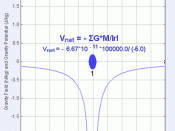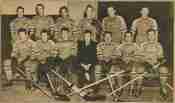The Winter Olympics are held every four years at a different host city. This past year they were held here in the United States, in Salt Lake City. A wide variety of different types of winter sports are played at the Olympics but three of the most popular are men's and women's ice hockey, figure skating, and downhill skiing. Physics plays a very large part in how these sports are played, most people don't realize it but without some of the simple laws of physics these sports wouldn't be the same as they are today.
Men's and Women's Ice Hockey Olympic Ice hockey is definitely the most brutal form of hockey. Many violent collisions, fights, and body checks occur during every game. That is why it is perfectly able to demonstrate the rules of momentum, impulse, and collisions using examples from Olympic Ice Hockey. To understand how momentum and impulse apply to ice hockey, it really helps to understand what they are.
Momentum is defined as the MASS of an object times its VELOCITY, or P=mv. Impulse is known as simply the change of momentum, and is formally defined as the product of the force exerted to change the momentum and the time it took to do that (P=Ft) There are two types of collisions: totally elastic and totally inelastic. Both of these types of collisions can be observed while watching your typical Olympic ice hockey game. An example of a near totally elastic collision; after hitting each other, both players bounce off each other like rubber balls, and almost no kinetic energy is lost. With inelastic collisions after twp players collide with each other, the two players almost become one, and have lost virtually all of their kinetic energy. They probably saw each other in just enough time to...


